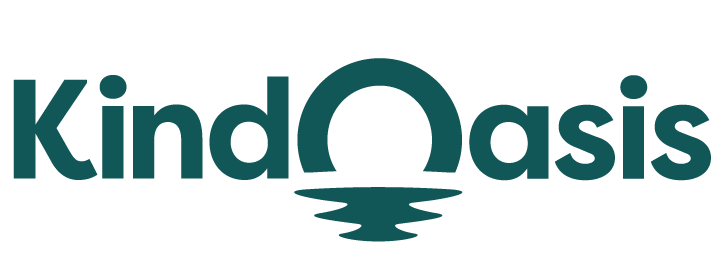How to Create a Knowledge Base for Your Chatbot
Begin by identifying common customer queries and issues related to your ecommerce business. Organize this information into categories like shipping, returns, and product details. Use a platform like VanChat to input this data, ensuring it's easily accessible and searchable for your chatbot. Regularly update the knowledge base with new information and customer feedback to keep it relevant and effective in assisting your customers.
Creating a Knowledge Base for Your Chatbot: An In-Depth Analysis
Developing a knowledge base for your AI chatbot involves a meticulous process that enhances its ability to assist customers effectively. Here’s a deeper dive into crafting a comprehensive knowledge base for your ecommerce chatbot:
Identifying Common Customer Queries
Start by compiling a list of frequently asked questions and issues raised by customers. Analyze customer service logs and feedback to pinpoint these common queries. Categorize this information into relevant groups such as:
- Shipping: Delivery times, shipping costs, tracking orders.
- Returns: Return policies, refund processes, exchange procedures.
- Product Details: Sizes, colors, materials, care instructions.
Organizing Information into Categories
Structuring your knowledge base is crucial for efficient information retrieval. Ensure each category is distinct yet comprehensive to prevent overlap. For example:
- Product Support: Could encompass both technical specifications and user manuals.
- Use intuitive category names that align with customer expectations and understanding.
Inputting Data with VanChat
Utilize platforms like VanChat for data entry, ensuring the information is easily accessible. Here are some tips:
- Searchability: Use keywords that customers are likely to use.
- User-Friendly Format: Ensure data is formatted in a straightforward, readable manner.
- Internal Linking: Connect relevant articles within the knowledge base for in-depth assistance.
Regular Updates and Customer Feedback
A knowledge base is dynamic and must evolve with your business. Regularly update it by:
- Monitoring Trends: Keep an eye on new customer queries or shifting trends.
- Feedback Loops: Implement feedback mechanisms to collect insights directly from users.
Useful Tips
- Pilot Testing: Before fully deploying your knowledge base, conduct a pilot test to identify any potential issues. Refer to test Shopify AI assistant for effective testing strategies.
- Consistency is Key: Ensure uniformity in language and tone across all entries to maintain a professional appearance. You may want to explore optimize Shopify customer experience for further insights.
Common Mistakes
- Overloading Information: Avoid cramming too much information into one category or article; this can overwhelm users.
- Neglecting Updates: Failing to update the knowledge base can lead to outdated or irrelevant information, frustrating users.
Useful Tools
- Content Management Systems (CMS): Consider tools like Notion or Confluence for organizing and managing content efficiently.
- Analytics Tools: Use analytics to track which articles are most accessed and identify areas needing improvement.
Establishing a robust knowledge base for your AI chatbot requires a strategic approach, leveraging the right tools and maintaining a commitment to continuous improvement. By following these guidelines, you can ensure your chatbot remains a valuable asset to your ecommerce operations.
Use Cases for Creating a Knowledge Base for Your Chatbot
Creating a knowledge base for your chatbot can significantly enhance customer experience and streamline operations. Here are some popular use cases:
- Product Information and FAQs: Compile a comprehensive list of your products, including descriptions, prices, and availability. Add answers to frequently asked questions about shipping, returns, and payment options. This allows the AI chatbot to provide instant, accurate responses to common inquiries. For more on product recommendations, consider exploring AI product recommendation tools.
- Order Tracking and Status Updates: Integrate post-purchase order tracking information into your knowledge base. Customers can quickly check the status of their orders through the chatbot, reducing the need for direct customer service intervention..
- Troubleshooting Guides: Develop step-by-step guides for resolving common issues, such as login problems or payment errors. This empowers customers to solve problems independently, improving satisfaction and reducing support tickets. Check out AI chatbot accurate responses for enhancing troubleshooting capabilities.
- Personalized Recommendations: Use customer data and preferences to build a knowledge base that offers tailored product suggestions. This can enhance the shopping experience, increase engagement, and boost sales.
- Loyalty Program Information: Provide detailed information about your loyalty program, including how to earn points, redeem rewards, and track progress. This helps customers easily access and understand their benefits.
By implementing these use cases, you can create a robust knowledge base that enhances your chatbot's capabilities and supports your ecommerce business growth.
Useful Statistics for Creating a Knowledge Base for Your Chatbot
Creating an effective knowledge base for your AI chatbot can significantly enhance customer support and streamline operations for your Shopify store. Here are some key statistics to consider:
- Increased Customer Satisfaction: According to a 2023 report by Gartner, businesses that implement a well-structured knowledge base see a 25% increase in customer satisfaction scores. This is because customers can quickly find answers to their queries without waiting for human assistance.
- Reduction in Support Costs: A study by Forrester Research in 2022 found that companies using a comprehensive knowledge base for their chatbots experienced a 30% reduction in support costs. This is achieved by deflecting common questions and freeing up human agents to handle more complex issues.
- Improved First Contact Resolution (FCR): Research by Zendesk in 2023 indicates that chatbots with access to a robust knowledge base improve first contact resolution rates by up to 20%. This means that customers are more likely to get their issues resolved during their first interaction, enhancing their overall experience.
- Enhanced Efficiency: A report from Salesforce in 2023 highlights that businesses with an organized knowledge base see a 40% increase in operational efficiency. This is due to the automated nature of chatbots, which can handle multiple inquiries simultaneously, reducing wait times and improving service speed.
These statistics underscore the importance of investing time and resources into developing a comprehensive knowledge base. By doing so, Shopify merchants can not only improve customer satisfaction and loyalty but also optimize their operational efficiency and reduce costs.
FAQ
What is a knowledge base for a chatbot AI?+
A knowledge base for a chatbot AI is a centralized repository of information that the chatbot uses to understand and respond to user queries effectively. It includes FAQs, product details, and other relevant data.
Why is a knowledge base important for a chatbot assistant?+
A comprehensive knowledge base enhances the chatbot's ability to provide accurate and timely responses, improving customer satisfaction and streamlining support processes.
How do I start building a knowledge base for my Shopify chatbot?+
Begin by gathering common customer queries, product information, and support documentation. Use this data to create structured content that your chatbot can access to answer questions.
What types of information should be included in the knowledge base?+
Include FAQs, product descriptions, troubleshooting guides, company policies, and any other information that can help the chatbot assist customers effectively.
How often should I update my AI chatbot's knowledge base?+
Regular updates are crucial. Update the knowledge base whenever there are changes in product offerings, company policies, or when new frequently asked questions arise.
Can I integrate my existing Shopify data into the chatbot's knowledge base?+
Yes, integrating existing Shopify data such as product catalogs and customer service records can enhance the chatbot's ability to provide accurate and personalized responses.
How can I ensure my chatbot's knowledge base is SEO-friendly?+
Use relevant keywords, clear headings, and structured data to ensure that your knowledge base content is easily discoverable by search engines and aligns with SEO best practices.
What tools can help me create and manage a chatbot knowledge base?+
There are several tools and platforms available that can help you create and manage your chatbot's knowledge base, including specialized knowledge management software and AI-driven platforms that integrate with Shopify.




